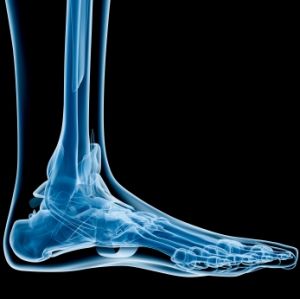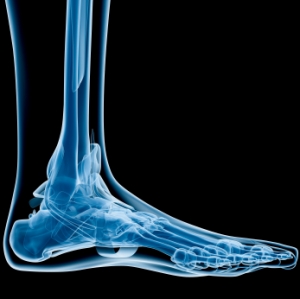
Solid Footing

In a few years I’ll be 60. I’ve been in the business now for 37 years, but no one ever talked to me about how to care for my feet until I finally had to go to a podiatrist a few years ago. When he looked at my X-rays he said, quite confidently, “You are a lineman right?” It seems he had seen the picture several times before.
The bones and connecting tissue and ligaments that make up your feet and legs, as it turns out, are fairly malleable. For the first 20 years of my career, I worked in an older city area where just about every distribution pole was in a backyard, so I climbed almost every day. Now I have what’s called “C-foot.” My feet point outward more than normal, almost at the angle you might see if you looked down at your feet from the top of a 50 class 2. My ankles are also out of line. When I walk, I put more pressure along the outside of my foot as opposed to bearing weight evenly across my feet.
It seems that it doesn’t take too many trips up a pole to create this condition. A $400 pair of custom-designed orthotic inserts has eased the discomfort. The inserts force your feet into a more natural position. The corrective inserts have also diminished the occasional pain I had in my back and lessened the wear on the outside of the heels and soles of my boots.
Prevention Long-Term Injury
There are things that we can do to prevent long-term injury to lineman’s feet. One is to have the right climber. I always climbed in a straight climber with a very narrow stirrup. I favored L-pads and buckled my climber loosely across my boot.
It turns out that the more you can do to stabilize your ankles when you climb, the less damage you do. Linemen should consider steel pads and maybe even the double strap pads favored by tree workers to keep the shank inline with the lower leg. These pads help to keep bearing pressure straight down through the ankle. Avoid climbing in non-shanked arches and keep your straps tight to keep the arch of your foot flat in the stirrup. And don’t go cheap – buy a reputable boot.
Utility safety professionals might also consider consulting with a podiatrist for advice on developing a foot care presentation, including information on purchasing the best shoes. I’ve had a podiatrist visit my safety meetings and give presentations on foot care. Linemen might also consider making routine visits to a podiatrist.
There are a myriad of foot problems caused by wearing the wrong shoes that we don’t have to endure. Get a little foot care information now, and when you are 60 and listening to your friends complaining about their feet, you’ll thank me.
About the Author: Jim Vaughn is a Safety Supervisor with MYR Group’s Sturgeon Electric in the Arizona/New Mexico Line Division. A former lineman with 20 years of transmission and distribution construction and maintenance experience with IOUs and Co-ops, he has spent the past 17 dedicated to safety and training in the line industry.
video

